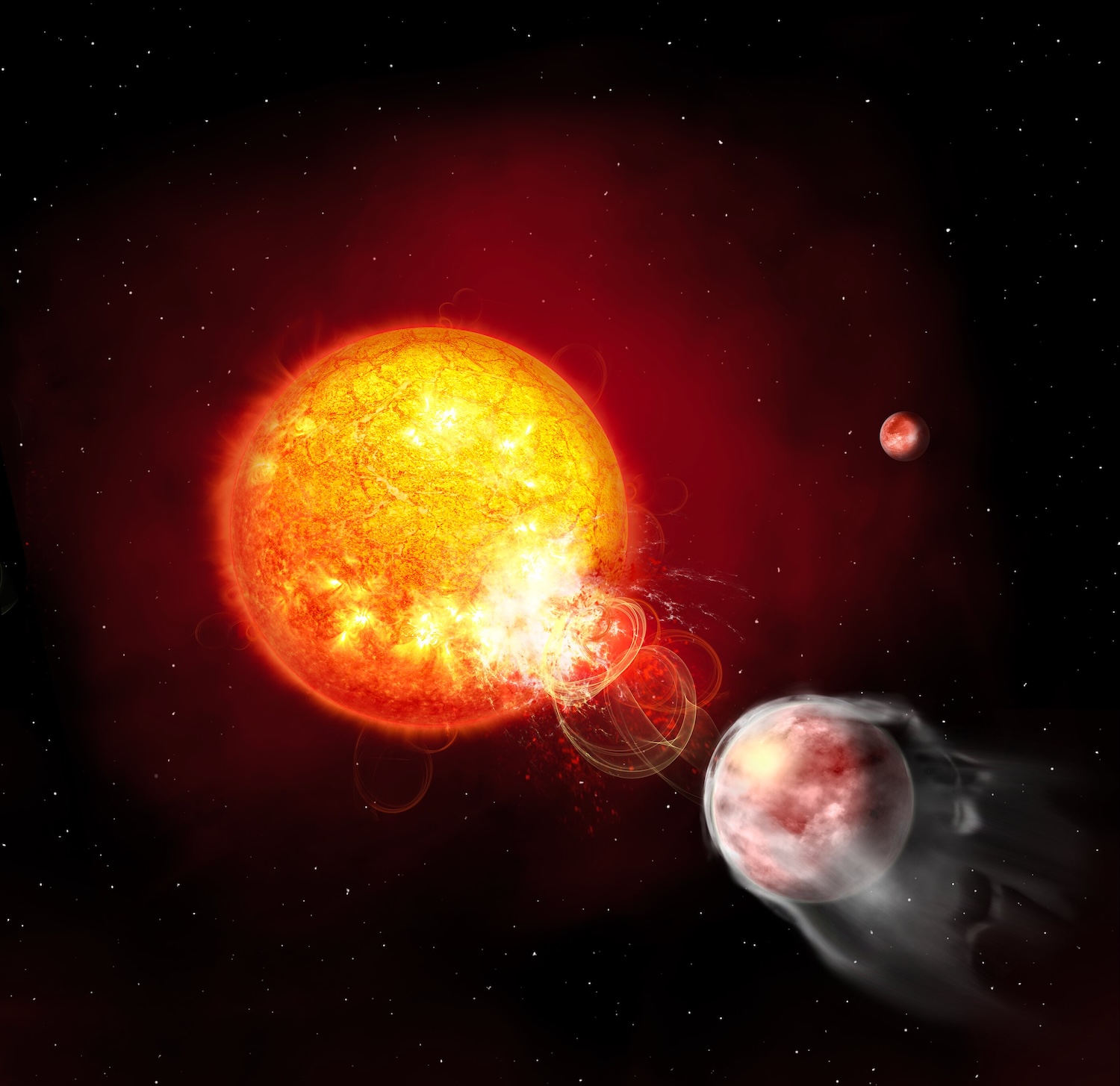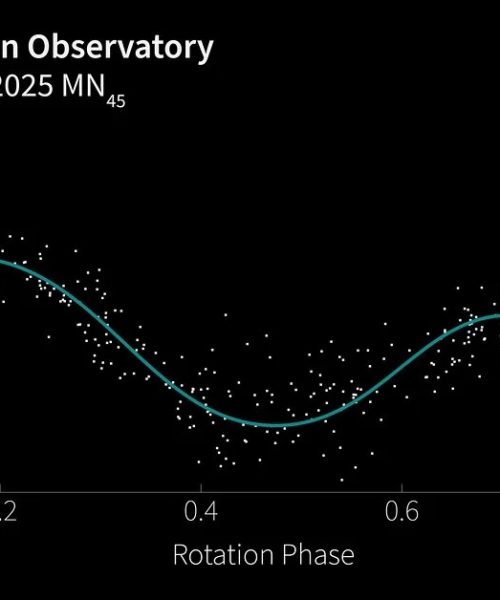The outlook isn’t great for the exoplanet HIP 67522 b. Over the next 100 million years, powerful magnetic fields and destructive cosmic radiation will continue eating away at the distant planet, reducing it from its current Jupiter-sized mass down to a size resembling Neptune. But these apocalyptic conditions aren’t the fault of a nearby black hole. Instead, they’re a result of what astronomers describe as the exoplanet’s “clingy” relationship to its host star.
“I have a million questions because this is a completely new phenomenon, so the details are still not clear,” Ekaterina Ilin, a researcher at the Netherlands Institute for Radio Astronomy (ASTRON), said in a statement.
Long theorized but never observed, the first known “planet with a death wish” is described by Ilin and her colleagues in a study published July 2 in Nature.

Astronomers have been studying this exoplanet and its host star HIP 67522 for years with high-tech tools like NASA’s James Webb Space Telescope and Transiting Exoplanet Survey Satellite (TESS). They already knew that HIP 67522 is slightly larger and cooler than our 4.5-billion-year-old sun, but is also much younger at just 17 million years old. HIP 67522 is also a far more active star than our sun, and routinely emits much stronger energy flares. It also hosts two planets, but HIP 67522 b has a faster orbit than its sibling and takes only seven days to complete a circuit.
“We hadn’t seen any systems like HIP 67522 before; when the planet was found it was the youngest planet known to be orbiting its host star in less than 10 days,” explained Ilin.
Knowing this, Ilin’s team decided to try getting a closer look at HIP 67522 b, and enlisted the European Space Agency’s (ESA) exoplanet satellite CHEOPS, for help. CHEOPS is capable of targeting and observing individual stars, and soon documented intermittent flares coming from HIP 67522.
“With CHEOPS we saw more flares, taking the total count to 15, almost all coming in our direction as the planet transited in front of the star as seen from Earth,” said Ilin.
This correlation implied that the interactions between the star and its planet were directly responsible for the flares. But there was a problem with this possibility: astronomers long believed stars only behave independently of their host planets. So how could that be possible?
“We find that the 15 flares in HIP 67522 cluster… [indicate] persistent magnetic star–planet interaction in the system,” the authors wrote in their study.
The physics also supports the theory. Knowing HIP 67522 b’s extremely close orbit, this interplay could be possible if its star possesses a strong magnetic field. And given HIP 67522’s age, that’s almost a certainty.

The current theory is that as the planet amasses energy during its orbit, some of that is redirected in waves along the star’s magnetic field lines like someone cracking a whip. Once that wave reaches the end of the magnetic field line, it initiates a major energy flare.
However, a large portion of those powerful cosmic rays aren’t simply flung into deep space, Instead, they’re redirected back to HIP 67522 b itself with six times the radiation than if it had orbited at a safer distance.
“The planet seems to be triggering particularly energetic flares,” added Ilin. “The waves it sends along the star’s magnetic field lines kick off flares at specific moments. But the energy of the flares is much higher than the energy of the waves. We think that the waves are setting off explosions that are waiting to happen.”
This means that over the next 100 million years, all of that destructive energy will erode an already wispy atmosphere and shrink the planet’s overall mass. Eventually, that atmospheric erosion will be the doom of HIP 76522 b.
Luckily, there’s plenty of time for astronomers like Ilin to continue studying the unprecedented new find. Researchers hope to follow up their observations by determining the exact types of energy released by each flare. Meanwhile, they intend to scour and find similar star-planet systems to see if any other cosmic death wishes are out there.






